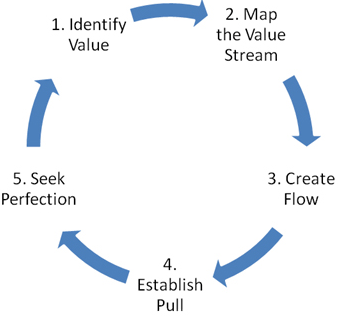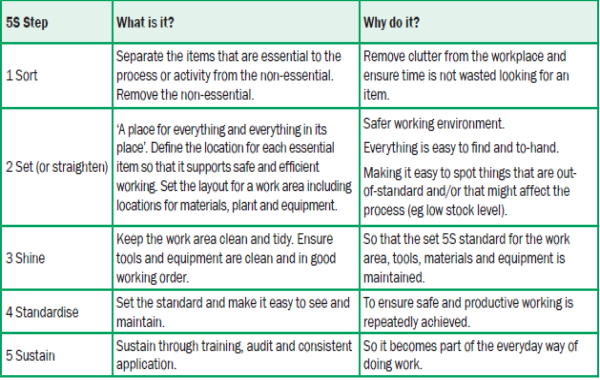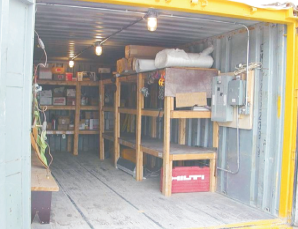Benefits of Lean Tools for Construction
| ✅ Paper Type: Free Essay | ✅ Subject: Construction |
| ✅ Wordcount: 2904 words | ✅ Published: 23 Sep 2019 |
Chapter 1: Introduction
This thesis presents an overview of the fundamental lean tools and techniques that if implemented correctly will create real benefits to both the delivery and performance of various kinds of construction projects. Initially the background to the concept of lean construction and the purpose of the research will be described, before a brief description of the conducted research and research targets are highlighted. The chapter closes with an overview of the thesis, detailing the selected lean tools and general structure of the thesis.
1.1 Overview
Lean is a term that describes methods for the elimination of waste in a process, with the goal of ultimately maximizing customer value while minimizing costs. Lean allows the true customer value to be defined, which in turn enables any activities or tasks that do not contribute to customer value to be eliminated or reduced as much as possible. Adopting lean ensures that the core purpose of the process is delivered in the most effective and efficient manner. Lean construction refers to the combination of lean principles and current construction practice. Similar to general construction practices, lean construction has the goal of better meeting customer needs while reducing wastage as much a feasibly possible. Although, unlike general construction practice, lean construction relies on production management principles which results in a new project delivery system that can be applied to any form of construction(Howell, 1999).
Lean construction places a large emphasis on waste reduction and managing flows. These focus areas are what separates lean construction from the traditional construction management (Ballard and Howell, 1994). How work progresses through the system is called flow. Flow management is the control of materials and information in the process, with the goal to ensure smooth flow throughout the process. Waste reduction is a key principle of lean construction. Waste can be divided into two categories:
Non-Value Adding but Necessary (NVAN): These are activities or tasks that do not directly contribute towards the customer value but are an inherent part of the process.
Non-Value Adding and Unnecessary (NVAU): These are activities or tasks that do not contribute towards customer value and are not an inherent part of the process.
All activities that are not classified as waste must be optimised, NVAN activities must be reduced as much as feasibility possible without effecting the process, and NVAU activities can be eliminated from the process completely. Flow and waste management are the two fundamental pillars in creating a sustainable and efficient lean construction organisation.

Figure 1.1 Categories of Activities (Lean Construction Blog, 2015)
Adopting lean construction can provide both tangible and intangible benefits to organisations. Properly implementing lean construction can result in numerous benefits including, increased productivity and reduced costs (O’Connor and Swain, 2013). Despite this lean construction is not commonly used around Ireland. From the conducted case study as part of the research for the thesis, only 40% of the selected participants had a proper understanding of the concepts of lean construction. Lean is primarily associated with manufacturing processes, and for this reason lean construction is overlooked. This is why the main foci of the thesis is to not only highlight the benefits of lean construction, but also show how to implement the lean tools and techniques into a traditional construction company. Ultimately the aim of the research is to provide construction companies with recommendations and guides on implementing lean tools and techniques.
1.2 Procedure
The focus of this report is to conduct a case study on the current state of lean construction in Ireland and to deliver recommendations for the implementation of lean systems into construction. To find out if lean systems are a common practice within construction companies, we compiled a detailed questionnaire, conducted several interviews with individuals within the construction sector and surveyed two different sites. The questionnaire was developed and sent to companies varying in size and location which enabled us to have a large and broad sample area giving us a true understanding of lean systems in Ireland today.
This information was collected in two ways, eight questionnaires were sent out to a number of construction companies and two interviews were conducted with William McLaughlin, Project Manager from Bennett Construction and Kevin Lynch, Project Manager from Andrews Construction. The questionnaire consists of a Likert scale, ranging from strongly agree to strongly disagree with different types of lean methods followed by twelve questions going further into detail. The interviews were used to collect information from the site regarding the layout of site, codes and practices and their use of lean systems. The interview gave us an opportunity to ask more detailed questions that we could not in the questionnaire.
These two methods of data collection performed have provided a more in-depth analysis of lean systems in construction sector. The data was analysed and compared with other papers and journals published in the field of lean systems in construction. Our objective was to provide evidence of a pattern in the use of lean systems in construction in Ireland. In conclusion, the report will give several recommendations for construction companies in relation to the effective implementation of lean systems into their day-to-day routine processes. These recommendations provide guidelines on how to gradually employ the lean system methodology into their practices and to eliminate overall wastes and as a result ensuring a more effective use of their resources.
1.3 Structure of Dissertation
This section contains a brief overview of the contents of each chapter in the thesis.
1.3.1 Chapter 2 – Literature Review
The literature review provides an overview of the papers that have been published on lean construction, particularly focusing on implementation of lean tools and techniques. Initially progress through the breakdown of lean systems, discussing its origins, and providing details as well as critiquing the various tools and techniques. Discusses the combination of lean and construction, using information from previously published papers. Giving the reader a through insight of what lean construction has to offer, as well as any doubts surrounding it.
1.3.2 Chapter 3 – Materials and Methods
Materials and methods describes the case study conducted as part of the research on lean construction. It divides the methodology of the case study into sections, describing each step in detail. Also presents the analysed data in tabular form, as well as detailing any limitations that occurred.
1.3.3 Chapter 4 – Results and Discussion
Results and discussions contains all the results from the analysed data. The important findings from the research are highlighted, along with any trends in the data. Each finding is further discussed in detail, analysing the meaning and implications of the data. The results will be compared with other studies as well as the original objectives to see if they are met, or if the results disprove any original assumptions.
1.3.4 Chapter 5 – Conclusions and Recommendations
Conclusion and recommendation section contains an overview of the thesis, reiterating the background and objectives of the study. This section will act as a semi-evaluation of the conducted research comparing the research goals and actual findings.
Chapter 2: Literature Review
This chapter presents a detailed analysis of the current state of both traditional construction and lean construction in Ireland, also provides an extensive review of the recommended lean construction tools and techniques analysing their benefits and implementation. The literature progresses into the barriers to implementing lean construction tools and techniques, and where the current gaps in the process itself and literature lie.
2.2 Lean Construction
Toyota were the original founders of lean production, led by Engineer Ohno. Engineer Ohno was dedicated to eliminating waste from Toyota’s production system. It was on his visit to the US car production companies, where he encountered mass production of cars in order to try keep each machine running at maximum production. “Where US manager saw efficiency, Ohno saw waste at every turn”, (Tommelein and Ballard, 1999). The US approach focused on keeping production machines running in an effort to minimize the cost of each car, while Ohno’s system focused on producing a car to the requirements of the customer and setting a standard of perfection. It was this unique approach to car production, along with strict principles that led to the creation of Toyota’s famous production system. The guidelines and principles from this production system are still widely implemented into various types of systems today.
Lean construction employs the principles of Toyota’s production system along with traditional construction practices, to form an efficient and cost effective project delivery system. Lean has many fundamental principles, but has five key principles that are crucial to any form of system:
Defining Customer Value:
It is vital to define value from the perspective of the customer; this is the customer’s desirable outcomes or deliverables. In a construction project this could be, a house that must meet predefined specifications and functional performance criteria.
Map the Value Stream:
Using the previously defined customer value as a reference point, activities that contribute towards this value or are an inherent part of the process must now be identified. NVAU activities must be eliminated completely, while NVAN must be reduced as much as possible without effecting project performance. In relation to construction of a house, this means to identify all activities that are essential to delivering the desired house with the aim of establishing waste-free and efficient activities. All other processes must be eliminated or reduced, while value-adding activities must be undertaking in the most productive way.
Make the Value Flow:
Once waste has been removed from the process, the next step is to ensure that the remaining activities run smoothly without any interruptions or delay. This can be done by dividing work areas into smaller work packages, meaning that each trade can follow onto the proceeding trade quicker.
Established Pull:
This refers to only carrying out work that is aligned with the demand of the customer. In relation to construction this means to align construction activities to the customer’s agreed pace of construction. The aim is to ensure that all parties involved in the project follow an agreed timeline, where all activities are only carried out to assist a successor activity. This also allows for “just in time” (JIT) delivery of materials, which means that materials are only delivered when needed. JIT requires less space on site and reducing material waste. Since materials have a faster turnaround they are not being stored as long therefore freeing up space, as well as reducing the chance of materials becoming damaged or obsolete while being stored.
Perfection:
This refers to continually looking to improve upon the current process, using the experience from past projects as lessons learnt. This is vital in ensuring the sustained performance for future projects.
These principles are the fundamental steps necessary in order to make a construction project lean, they play a key role in “reducing waste and building lean enterprises” (Dahlgaard and Dahlgaard-Park). Following these guidelines will not only reduce waste and improve flow in the project, but will also ensure that lean thinking is a part of the organisation’s culture.

Figure 2.1 Five Key Lean Principles
In recent years’ lean construction has seen growing international interest (Green, 1998). This is due to people becoming more educated on lean concepts and understanding that it can be applied to other areas outside manufacturing. Generally, there is a lot of correlation between the UK and Irish construction practices. Despite this, in the UK lean thinking is “strongly endorsed” (Green, 1998), while in the Irish construction industry lean thinking is not commonly implemented. There is no doubt that This is mainly due to a lack of knowledge of the benefits of implementing lean construction, as well as a lack of guides on how to implement lean.
2.3) Lean Construction Tools & Techniques
There is no doubt that lean construction is the way forward for all construction industries around the world, with about 57% of productive time waste existing in the industry (Ansah et al, 2016). This is a remarkably high percent, which only further emphasises the need for change. Lean tools and techniques provide the knowledge and approach necessary to minimize or totally eliminate waste from a construction project. The adoption of lean tools is one of the most effective ways of reducing delays in a construction project (Nikakhtar et al., 2015). The general aim of lean construction tools and techniques is to achieve customer satisfaction, this is done by increasing process productivity and reducing process waste, as well as improving the overall delivery system.
2.3.1) 5S Work Place Organisation
5S plays a key part in creating a minimal waste workplace. The 5S process is about “a place for everything and everything in its place” (Salem et al, 2005). 5S is broken down into five steps; Seiri (sort), Seiton (straighten or set in order), Seiso (shine), Seiketsu (standardize), and Shitsuke (sustain). 5S provides a systematic method for attaining, maintaining and continually improving upon the standard site layout and setup. 5S should be employed to any workplace, but in particular construction sites. Sites are more prone to gathering miscellaneous items due to the various kinds of workers that can be on site. 5S improvement activity should always be carried out by people who work within the area, so that the 5S standard, its maintenance and improvement is achieved (O’Connor and Swain, 2013)
2.3.1.1) Approach
 The 5S approach consists of five systematic steps for work place organisation:
The 5S approach consists of five systematic steps for work place organisation:
Figure 2.2 Five Steps of 5S
5S should be an automatic way that a workplace is set up and managed. It should be implemented at micro levels of operations and should be applied everywhere. For optimal implementation, 5S should be implemented as a team effort. This will establish ownership and acceptance of the 5S standard (O’Connor and Swain, 2015).


Figure 2.3 Site Inventory Before and After Implementing 5S
2.3.1.2) 5S Benefits to Construction
Implementing 5S has numerous benefits to any organisation. Abeldelhamid and Salem (2005) describes how 5S can create space making it easier to spot potential problems, and improve morale as there is a better working environment. O’Connor and Swain (2015) highlights how 5S can create a standard protocol for employees to follow, support visual management, improve safety due to fewer trip hazards, and increase productivity as tools, materials and equipment are always organised and on hand minimizing wasteful, non-productive time trying to locate them. Although, O’Connor and Swain (2015) outlines the crucial benefits that implementing 5S can have on a workplace, they fail to address the benefit of creating an environment of continuous improvement. This is arguable the most important benefit of implementing 5S, as ensuring that all team members are continuously and actively looking to improve upon current practices is vital for any organisation looking to succeed.
2.3.2) Last Planner System
Last planner system (LPS) is a team based collaborative planning process that involves design team members as well as trade foremen. The last planner group are accountable for both production unit control and operational planning. Production unit control is the completion of individual assignments or tasks at the operational level, while operational planning is the structuring of project design to facilitate improved work flow (Salem et al, 2005). LPS allows for all teams involved in the project to have an input on the project framework, this will ensure that all involved in the project would have a clear understanding as well as agree with the schedule.
2.3.2.1) Approach
The last planner system follows a structured and systematic sequence of implementation:
Master Programming:
Master Programming is the overall project schedule; it is completed at the very beginning of the project. It focuses on determining the major milestones in the project, the milestones are used as a benchmark to gauge the pace of the project.
Reverse Phase Scheduling
Reverse phase scheduling (RPS) is a more realistic version of the master programming schedule. The schedule is developed through a pull technique, working backwards from the completion date defined in the master programming schedule. Ballard and Howell (2003) indicates that phase scheduling is the link between production control and work structuring, and that the purpose of a phase schedule is to create a plan for the coordination and integration of various operations.
References:
- BALLARD, G. & HOWELL, G. 1994. Implementing lean construction: stabilizing work flow. Lean construction, 101-110.
- HOWELL, G. A. What is lean construction-1999. 1999. Citeseer.
- O’CONNOR, R. & SWAIN, B. 2013. Implementing Lean in construction: Lean tools and techniques-an introduction. CIRIA, London, UK.
- Photo Credits
- https://www.google.com/url?sa=i&source=images&cd=&cad=rja&uact=8&ved=2ahUKEwj1hYKyjuHfAhUxoXEKHekgAk4QjRx6BAgBEAU&url=https%3A%2F%2Fleanconstructionblog.com%2FThe-Concept-of-Waste-as-Understood-in-Lean-Construction.html&psig=AOvVaw2rPh_DejEp-C2y894n52aQ&ust=1547137294784050
- In-text – (Lean Construction Blog, 2015)
- Tommelein and Ballard
- http://citeseerx.ist.psu.edu/viewdoc/download?doi=10.1.1.418.4301&rep=rep1&type=pdf#page=9
- (Dahlgaard and Dahlgaard-Park)
- https://www.emeraldinsight.com/doi/full/10.1108/09544780610659998
- (Green, 1998)
- https://www.tandfonline.com/doi/pdf/10.1080/014461999371637?needAccess=true
- Figure 2.1
- https://www.asme.org/engineering-topics/articles/manufacturing-design/5-lean-principles-every-should-know
- Figure 2.1 and 2.2
- (O’Connor and Swain, 2015) Lean tools and techniques
- Lean Construction Tools- (Ansah et al, 2016)
- (Nikakhtar et al., 2015)
- https://www.researchgate.net/profile/Amir_Zavichi/publication/275354053_Application_of_Lean_Construction_Principles_to_Reduce_Construction_Process_Waste_using_Computer_Simulation/links/553aada00cf245bdd76447f9.pdf
- (Salem et al, 2005)
- Lean tools-2
- (Abeldelhamid and Salem, 2005)
- https://www.researchgate.net/profile/Tariq_Abdelhamid/publication/242085758_LEAN_CONSTRUCTION_A_NEW_PARADIGM_FOR_MANAGING_CONSTRUCTION_PROJECTS/links/55b5240d08aed621de02da2b.pdf
- (Ballard and Howell, 2003)
- http://www.leanconstruction.dk/media/16974/An%20Update%20on%20Last%20Planner.pdf
Cite This Work
To export a reference to this article please select a referencing stye below:
Related Services
View allDMCA / Removal Request
If you are the original writer of this essay and no longer wish to have your work published on UKEssays.com then please click the following link to email our support team:
Request essay removal



